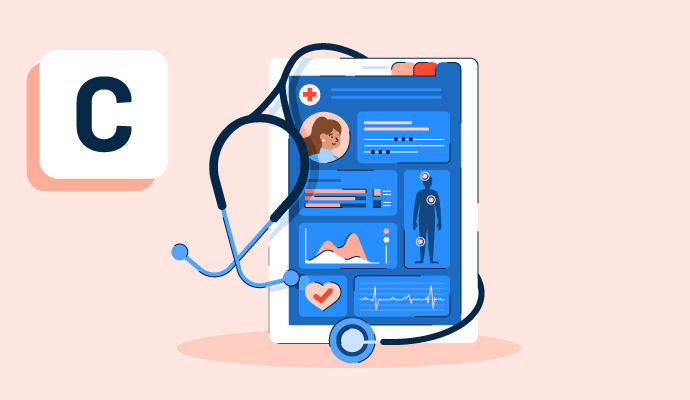What is clinical documentation?
Clinical documentation is the practice of creating records that comprehensively detail medical information such as treatments, trials, and tests.
These records encompass a wide range of information about a patient’s medical history, diagnoses, and progress. Clinical documentation, whether in paper or digital format, is used to provide appropriate care to patients.
Clinical documentation software is designed to add context to patient information reported during care appointments. Physicians, administrative staff, and health insurance providers use tools like these to facilitate efficient clinical pathways and communicate clearly across medical teams.
Types of clinical documentation
Clinical documentation takes various forms depending on the healthcare circumstances, the purpose of the documentation, and the needs of providers. Some of the common types of clinical documentation follow:
- Medical history contains information about the patient’s past medical conditions. Knowledge of things like allergies, surgeries, hereditary diseases, and lifestyle details helps healthcare providers understand the patient’s overall status and use this information to deliver care.
- Treatment history is a chronological overview of a patient’s medical visits, vaccinations, operations, interventions, and therapies. It includes thorough records of previous treatments and their outcomes.
- Progress notes record regular updates at selected intervals to document the patient’s condition and response to treatment. Progress notes help track changes in health and responses to treatment over time.
- Discharge summaries are prepared after treatment when a patient leaves a healthcare facility. They summarize a chronological record of events and offer an overview of the patient’s condition, treatment, medications prescribed, follow-up care instructions, and additional notes.
- Consent forms record patient consent to treatment, care, services, and any potential associated risks. Without informed patient consent, healthcare providers can’t take care of patients.
- Lab results comprise results from blood work, X-rays, and other diagnostic test results. Physicians use this information to recommend the best possible treatment.
The 5 Cs of clinical documentation
The best practices for clinical documentation are referred to as the 5 Cs.
- Clarity: It’s essential to accurately describe a patient’s condition using standard medical terminology, appropriate abbreviations, proper grammar, and correct spelling. Incorrect information can lead to misunderstandings.
- Conciseness: Clinical documentation should be short and to the point. Irrelevant details not only make record-keeping burdensome, but they can also confuse healthcare providers.
- Completeness: Entries should be completed during or immediately following service or treatment to achieve accuracy and completeness. Sometimes, medical administrative staff and healthcare providers understandably delay record keeping or leave blank spaces to return to. This can lead to incomplete records and inaccurate information.
- Confidentiality: All information has to be kept safe and private. Team members should create effective data security policies and follow Health Insurance Portability and Accountability Act (HIPAA) standards.
- Chronological order: Clinical documentation must be dated and arranged in chronological order. Incorrect chronology causes confusion. It can also be problematic in legal situations.
Benefits of clinical documentation
Healthcare providers and patients alike benefit from clinical documentation. It’s a crucial component of care, administration, and legal compliance. Some key advantages include:
- Informed decision-making. Accurate and comprehensive clinical documentation supports well-informed decisions and recommendations. When healthcare providers have the best information for making choices, patients experience better outcomes.
- Enhanced communication and continuity of care. Clinical documentation ensures that healthcare providers can access up-to-date, complete, accurate patient records. This facilitates communication across healthcare providers and promotes continuity of care should patients switch providers or settings. This is particularly crucial when a patient is getting treatment for a long-term or chronic condition.
- Legal and regulatory compliance. Proper documentation protects healthcare providers from legal risks. Clinical documentation may be used as evidence in legal or ethical disputes following a treatment plan or service.
- Patient safety. Proper clinical documentation makes sure staff know about patient allergies in order to prevent adverse drug reactions. Healthcare providers must have access to patient documentation when prescribing medications.
- Accountability and transparency. Documentation holds healthcare providers accountable for their decisions, ensuring transparency in patient care and the healthcare industry. It also allows patients and their families to have transparency about their diagnoses, progress, treatment plans, and related medical information.
Learn more about accessing medical records and submitting records or requests.

Alyssa Towns
Alyssa Towns works in communications and change management and is a freelance writer for G2. She mainly writes SaaS, productivity, and career-adjacent content. In her spare time, Alyssa is either enjoying a new restaurant with her husband, playing with her Bengal cats Yeti and Yowie, adventuring outdoors, or reading a book from her TBR list.

